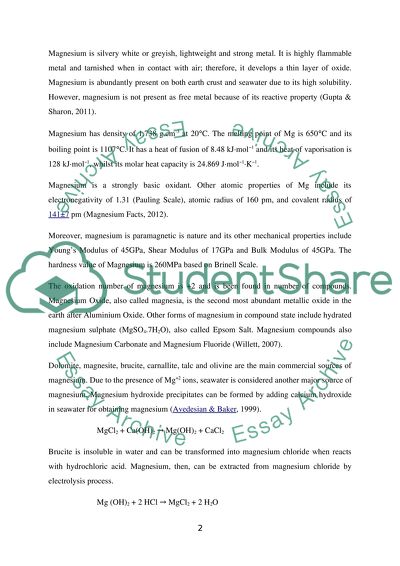Cite this document
(“Methods Used For Magnesium Essay Example | Topics and Well Written Essays - 5000 words”, n.d.)
Retrieved from https://studentshare.org/chemistry/1395768-magnesium
Retrieved from https://studentshare.org/chemistry/1395768-magnesium
(Methods Used For Magnesium Essay Example | Topics and Well Written Essays - 5000 Words)
https://studentshare.org/chemistry/1395768-magnesium.
https://studentshare.org/chemistry/1395768-magnesium.
“Methods Used For Magnesium Essay Example | Topics and Well Written Essays - 5000 Words”, n.d. https://studentshare.org/chemistry/1395768-magnesium.


